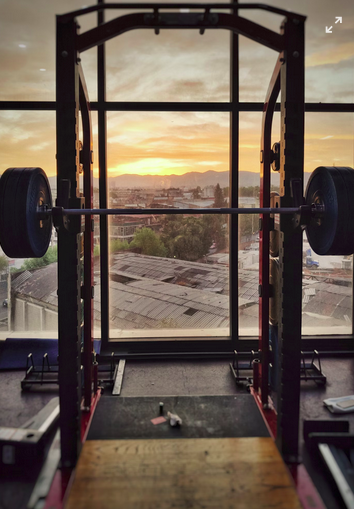How do we measure progression when we go into the gym? When do we know when to push it a bit more or back off?
Motivated First Responders and tactical populations often struggle with this. Fatigue accumulates throughout the week and you still want to get in a session at the gym. How heavy should you go?
This method is a way to put this well meaning tenacity to use. For those of you reading this who have already put on your zumba pants, yellow tank top, and are on your third shot of pre-workout...don’t be discouraged. Even the well rested and ready to go can still benefit from using this method in targeted training blocks.
Below is an excerpt from my book: Answering the Call: Proper Physical Training for Police and Military in the 21st Century.
One specific method I will describe is Autoregulatory Progressive Resistance Exercise (APRE). This method is something you will find on page 259 in the 6th edition of the book Supertraining written by Dr. Mel Siff. Supertraining is essentially an encyclopedia for almost all exercise methods ever created. If you haven’t read it and you are interested in all things strength and conditioning it is an incredible source of information. Just be warned it can be like reading the dictionary. For those confused by what a “dictionary” is and were probably born after 2000, it is primitive source of information where words are defined by other words and cataloged alphabetically in written format.
I saw this in application when I was a strength coach and it has been studied extensively by Dr. Bryan Mann, a former powerlifter and strength coach who is now the Director of Olympic Performance and Sports Science at the University of Miami. Despite the long name it is shockingly simple. The system is designed to let the trainee take advantage of the days they are feeling great and back off on the days they are not.
We will use the APRE 6 method. What does this mean? Well, you’ve spent a few weeks training hard so you will have a ball park for a load that you can do for 6-8 quality reps. As an example in week one I still programmed the Trap Bar Deadlift and a Bench Press Variation for your total body movements. let's say for the Trap Bar Deadlift you can do a quality set of around 6-8 with 300lbs. Below is how your sets and reps will look:
Approximate 6RM of 300lbs
Set 1 (Warm Up) 50% of 6RM- 150lbs X 10
Set 2 (Warm Up) 75% of 6RM- 225lbs X 6
Set 3 (First work Set) 100% of 6RM- 300lbs X Max (By Max I mean technical failure, I recommend once rep speed slows substantially, stop the set).
Now we note how many reps we did. For this example let's say we were conservative with weight choice and did 10. Where do we fall on the chart? We landed right in the middle of the 8-12 Rep Range. To the right is the adjustment amount for the weight used. In this case the protocol says to add 5-10 lbs. I’ll stay conservative and just add 5 lbs.
(Other examples: If I had done only 3 Reps, I would take 5lbs off, If I did 5 reps I would keep the same weight)
Set 4 (Second Work Set) Adjusted Weight of 6RM- 305lbs X Max
This time I get 10 again. Great! Next Week I am going to add 5-10 more lbs for my first work set. My previous warm up sets will be adjusted to fit this new load. In case there is any confusion it will look like this:
Next weeks workout:
Set 1 (Warm Up) 50% of new 6RM (310 lbs)- 155lbs X 10
Set 2 (Warm Up) 75% of new 6RM (310lbs)- 230lbs X 6
Set 3 (First work set) 100% of 6RM (310lbs)- 310lbs X Max (By Max I mean technical failure, I recommend once rep speed substantially slows, stop the set).
Set 4 (Second work set)- Adjusted load for Max.
One thing worth noting is you don’t need to be totally tied down by this warm up protocol. If you are a stronger person you will probably need a few more warm up sets. I wouldn’t turn it into a marathon but some of those jumps might be too big. I would also start on the lighter side of 6RM in week one to figure out where you need to be.
What ends up happening with this method is you end up getting two, fairly hard, quality sets of around 6-12 reps assuming appropriate weight was selected. From there your body will naturally wave with the reps and the load.
Although some will say this is too much work and math, why not just use 3 X 8 or whatever...fair point. What I like about this is it takes out the guesswork for the hard chargers who will always add too much weight. You either get the reps or you don’t. If the chart is telling you to stay at a certain load, hopefully you can put your ego to rest and come back next week ready to go. Ignoring your performance will just dig a deeper hole into your recovery.
APRE is also great for when you ignore my advice and you go to the gym despite getting held over on your shift. You now worked 16 hours and got 3 hours of sleep. You slam 5 shots of espresso and load up last weeks weight. Shockingly you recheck the weight because it feels too heavy. You struggled to get only 3 reps with a load you previous got 7 with the prior week. Maybe next time you’ll learn to concentrate on recovery and push that workout to the following day. I am also totally not speaking from personal experience describing this event.
Long term progression requires this kind of discipline, and using guardrails like the APRE system can help you...help yourself.
Original posting of this article can be found here.
Interested in our daily programming? Try it free for 7 days on the TrainHeroic App!




